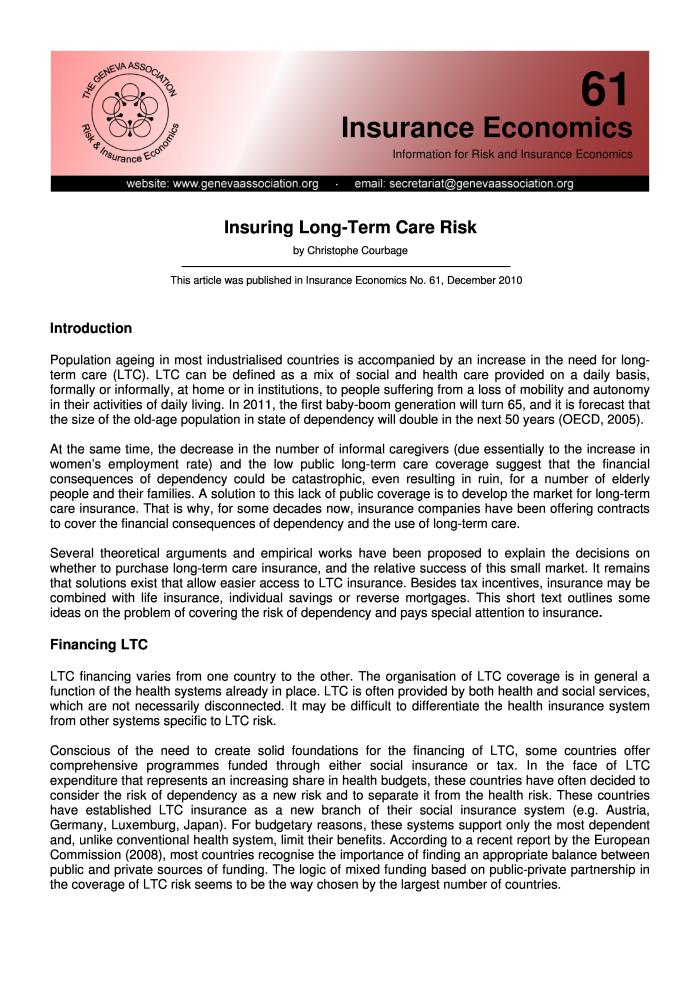Insuring Long-Term Care Risk

Introduction Population ageing in most industrialised countries is accompanied by an increase in the need for long- term care (LTC). LTC can be defined as a mix of social and health care provided on a daily basis, formally or informally, at home or in institutions, to people suffering from a loss of mobility and autonomy in their activities of daily living. In 2011, the first baby-boom generation will turn 65, and it is forecast that the size of the old-age population in state of dependency will double in the next 50 years (OECD, 2005).
Several theoretical arguments and empirical works have been proposed to explain the decisions on whether to purchase long-term care insurance, and the relative success of this small market. It remains that solutions exist that allow easier access to LTC insurance. Besides tax incentives, insurance may be combined with life insurance, individual savings or reverse mortgages. This short text outlines some ideas on the problem of covering the risk of dependency and pays special attention to insurance.




